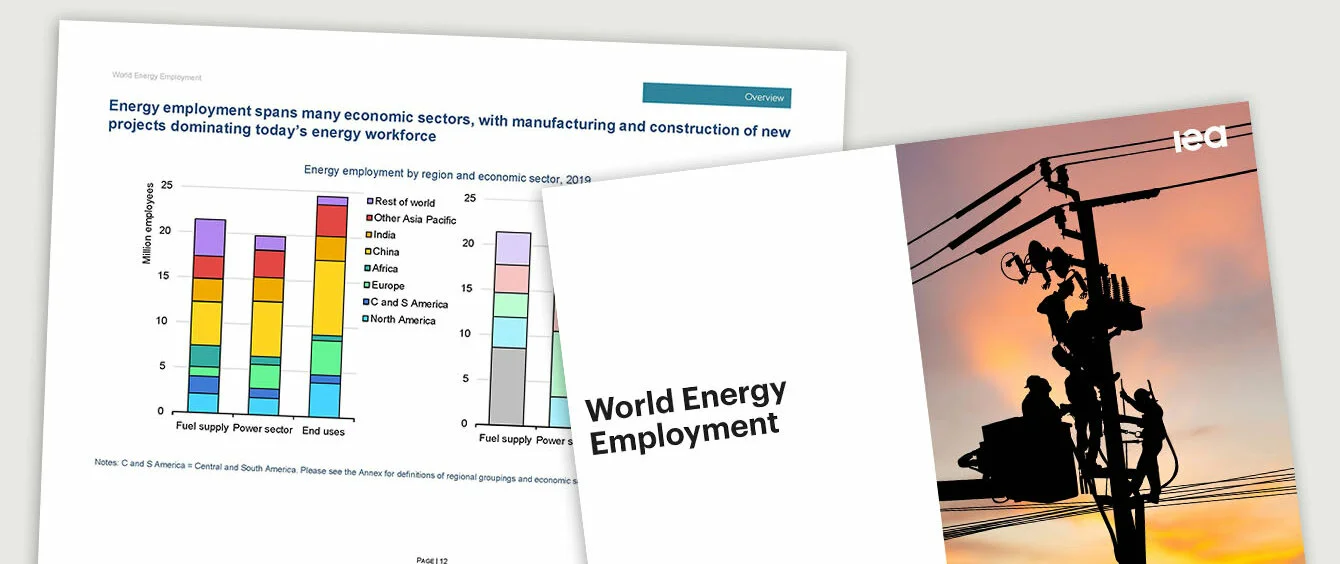Skilled labour is in high demand across numerous branches of industry. A sector with an unusually high level of job creation is energy. According to the first World Energy Employment Report recently published by the International Energy Agency (IEA) this branch of industry has a bigger labour force than ever before. And in view of the progressing energy transition, staffing needs are not likely to subside any time soon. This poses challenges that must be overcome by both the sector and policymakers.
Energy sector strong thanks to renewables as it navigates the pandemic
The IEA analysed global energy employment along the entire value chain based on over 15,000 datasets. The numbers reveal a clear and unsurprising development: The energy sector’s headcount is rising steadily and is increasingly shifting towards renewables. Even the COVID 19 pandemic only managed to slow the trend briefly, although the fossil sector has not yet made a full recovery from its impact.
Based on the report, over 65 million people worked in the energy business in 2019 – roughly two percent of the world’s population. These employees were distributed fairly evenly among energy supply (coal, oil, gas and bioenergy; 21 million), energy technology (generation, transmission, distribution and storage; 20 million) and energy applications (mostly vehicle construction and energy efficiency; 24 million). More than 50 percent of the jobs were in the Asia Pacific region, particularly China, which according to the report was largely due to the low cost of local labour.
Since then, a series of new vacancies filled in the renewable energy business has lifted employment higher than before the pandemic. According to IEA estimates, the worldwide labour force expanded by 1.3 million workers from 2019 to 2021. Another six percent jump is predicted for 2022 (some 4 million), which would break the 70 million barrier. Nearly all new jobs are being created in the renewables business.
Renewables take a 50 percent share of energy employment for the first time
The consequence of this lopsided growth is that over half of all energy jobs are in the renewables sector. Due to the war in Ukraine and political reactions to the energy crisis such as the US Inflation Reduction Act as well as the rise in global demand for energy, the IEA anticipates that the trend will pick up considerable speed in the near future.
Over 60 percent of the employees are involved in building new projects and producing clean energy technologies, with solar and EVs being the main drivers. However, the oil and gas sector is also experiencing an uptick thanks to new projects, above all relating to liquefied gas infrastructure.
Distribution and development of employees in the energy sector from 2019 - 2022
The Corona pandemic made an analysis for 2020 difficult; the IEA assumes a total of 60.2 million employees; Source: IEAEnergy among sectors affected by shortage of skilled labour
The IEA believes that all scenarios support a rise in employment in the renewables sector, which will outweigh the decline in jobs in the fossil fuel industry. Production of electric vehicles and charging stations is expected to be one of the biggest drivers of employment growth in the years to come. Photovoltaics and wind energy also have bright prospects, according to the IEA.
Skilled labour will be in especially high demand. According to the IEA, 45 percent of energy workers occupy positions requiring a high degree of qualification. This compares to a mere 25 percent in the economy as a whole. The IEA has 60 percent of new jobs requiring training in addition to a university or college degree. Many companies are already retraining their staff.
However, since this is not possible everywhere, the IEA is calling on governments, companies and educational institutions to cooperate in order to close the gap. Furthermore, additional problems must be solved, including wage differences and gender imbalance.
